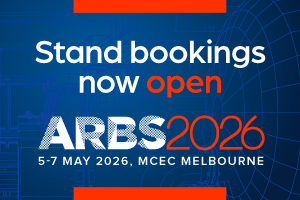How Australia’s 2035 emissions target will affect HVAC&R
The federal government has released its 2035 emissions target, which it says is “ambitious, achievable, and in Australia’s national interests”.

On Thursday, September 18, Prime Minister Anthony Albanese announced that Australia would aim to reduce greenhouse gas emissions by 62–70% from 2005 levels by 2035. Albanese will fly to New York later this week to submit the updated target to the United Nations General Assembly.
According to the most recent data, Australia has reduced its emissions by 29% on 2005 levels. Previous projections suggested that we would achieve a 51% reduction by 2035; this announcement represents a significant increase compared to that projected figure.
The announcement comes just days after the release of the National Climate Risk Assessment, a first-of-its-kind report that paints a grim picture of what Australia’s future will look like should we fail to minimise the severity of climate change.
AIRAH CEO Sami Zheng, Affil.AIRAH, says the announcement represents a step in the right direction on the path towards net zero.
“AIRAH welcomes the government’s target of reducing the nation’s greenhouse gas emissions by 62–70% from 2005 levels,” Zheng says. “This is an important milestone in our country’s necessary journey to net zero.
“While we would like to see more ambitious measures in some areas, especially in refrigerant transition, AIRAH acknowledges that the plan announced this week represents an achievable goal. It’s important to have a target – now it’s about the journey.”


Built environment plan
The 2035 target is underpinned by six sector plans. The plan that is most relevant to the HVAC&R industry is the Built Environment Sector Plan.
One of the plan’s goals is fast-tracking electrification within the built environment. It highlights that one of the major sources of Scope 1 emissions – direct greenhouse gas emissions from buildings – is fossil fuel gas. In homes, 57% of gas use is for space heating, while 36% is for water heating.
The plan identifies Scope 2 emissions – indirect emissions including those that come from offsite power generation – as the biggest contributor to the built environment’s greenhouse gas emissions. The built environment is currently responsible for 48% of the country’s Scope 2 emissions, a total of 73Mt CO2e per year. It identifies improving energy efficiency within buildings as the most effective way to reduce Scope 2 emissions.
The plan also touches on Scope 3 emissions, otherwise known as embodied carbon. It estimates that the built environment currently contributes 37–64 Mt CO2e of Scope 3 emissions per year in the construction process, including material extraction, transportation, manufacturing, construction, use, replacement, demolition and end of life.
“AIRAH supports initiatives to decarbonise the built environment, including the electrification of commercial, industrial and residential HVAC systems,” Zheng says. “Phasing out gas heating is a no-brainer; it reduces Scope 1 emissions from fossil fuel while increasing energy efficiency and improving overall performance.”
Business as usual on refrigerants?
The built environment plan makes specific reference to greenhouse gas emissions from hydrofluorocarbons (HFCs) within air conditioning and refrigeration systems, which it says account for 32% of the built environment’s Scope 1 emissions. It also notes that Australia is phasing down its use of HFCs by 2036.
However, the plan references phase-down targets Australia committed to when it ratified the Kigali Amendment to the Montreal Protocol in 2016, with no further targets mentioned. And there is no mention of some of the issues with the current approach that industry stakeholders, including AIRAH, highlighted during consultations with the Climate Change Authority.
“The environmental impacts of HVAC&R systems often get lost in high-level policy conversations, so it is encouraging to see HFCs mentioned in the Built Environment Sector Plan,” Zheng says.
“But the measures don’t extend beyond what the Kigali Amendment set in place nearly a decade ago. More importantly, they don’t address the HFCs that Australia imports in pre-charged equipment, which is now larger than what we import in bulk.
“More broadly, HFCs are just one part of a changing refrigerant landscape. Our sector is looking for leadership from government on where we should be heading, not just until 2036 but beyond.
“We would encourage the government to formulate a holistic plan for refrigerants. This will give the HVAC&R industry time to prepare for future changes and will further incentivise investment in sustainable technology.”
AIRAH CEO Sami Zheng, Affil.AIRAH
Finally, although the plan mentions the importance of maintaining HVAC&R systems, there are no specific measures that would support this.
“If we want to reduce Scope 1 emissions, better maintenance regimes and refrigerant tracking are no-regrets actions that would make a big difference,” says Zheng.
Expanding built environment programs
The plan identifies four major built environment programs that will be expanded to help Australia reach its decarbonisation goals. Those programs are:
The Commercial Building Disclosure (CBD) program
The federal government will invest around $10 million to expand the existing CBD program, which currently requires office buildings over a certain threshold to disclose NABERS ratings. The program will consider most commercial building types by 2035.
The National Australian Built Environment Rating System (NABERS)
The government will invest around $10 million to expand NABERS to prepare the commercial buildings sector for expansion of the CBD program by developing new tools and providing discounted NABERS ratings. According to the plan, the development and refinement of NABERS tools will also enable NABERS and its partners to deliver useful products for industry in areas such as energy flexibility and embodied carbon.
Greenhouse and Energy Minimum Standards (GEMS)
The government will invest around $16 million to modernise the GEMS Act, ensuring it is fit‑for‑purpose now and into the future. According to the plan, this will reduce emissions and deliver real bill savings by regulating a greater range of more efficient products and equipment across residential, commercial and industrial sectors.
The Nationwide House Energy Rating Scheme (NatHERS)
The government will invest around $33 million to continue and scale‑up the roll out of NatHERS ratings for existing homes. According to the plan, this will provide ratings and upgrade information for more households across Australia to better inform decisions on how to cut energy bills, reduce emissions and improve resilience and comfort in housing.
Read the full report
You can access the full suite of reports and information accompanying the announcement of the 2035 emissions target on the DCEEWW website.
The most relevant information for the HVAC&R section can be found in the Built Environment Sector Plan.
PREV
NEXT
Comments
Advertisements
Recent news
- 2025 AIRAH National Awards: Women’s Working Group – Airmaster wins Leadership in Diversity and Inclusion
- 2025 AIRAH National Awards: Inderpal Saund, Beijer Ref Academy, wins Excellence in Training
- 2025 AIRAH National Awards: Louvreclad wins Excellence in Innovation – Best New Product
Latest events
- 2025 AIRAH National Awards: Women’s Working Group – Airmaster wins Leadership in Diversity and Inclusion
- 2025 AIRAH National Awards: Inderpal Saund, Beijer Ref Academy, wins Excellence in Training
- 2025 AIRAH National Awards: Louvreclad wins Excellence in Innovation – Best New Product
 Nick Johns-Wickberg
Nick Johns-Wickberg Mark Vender
Mark Vender

Leave a Reply